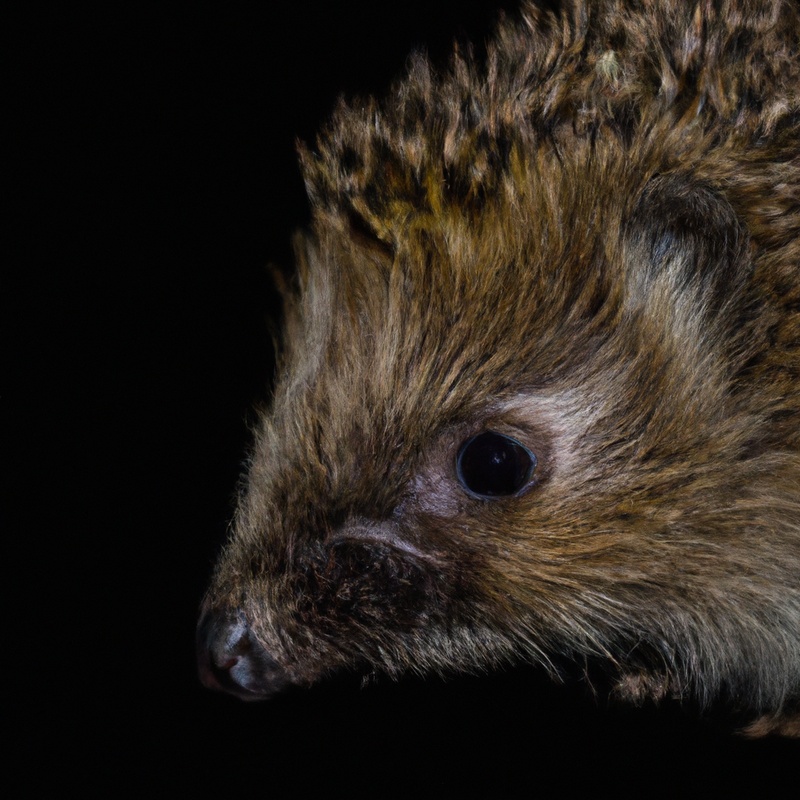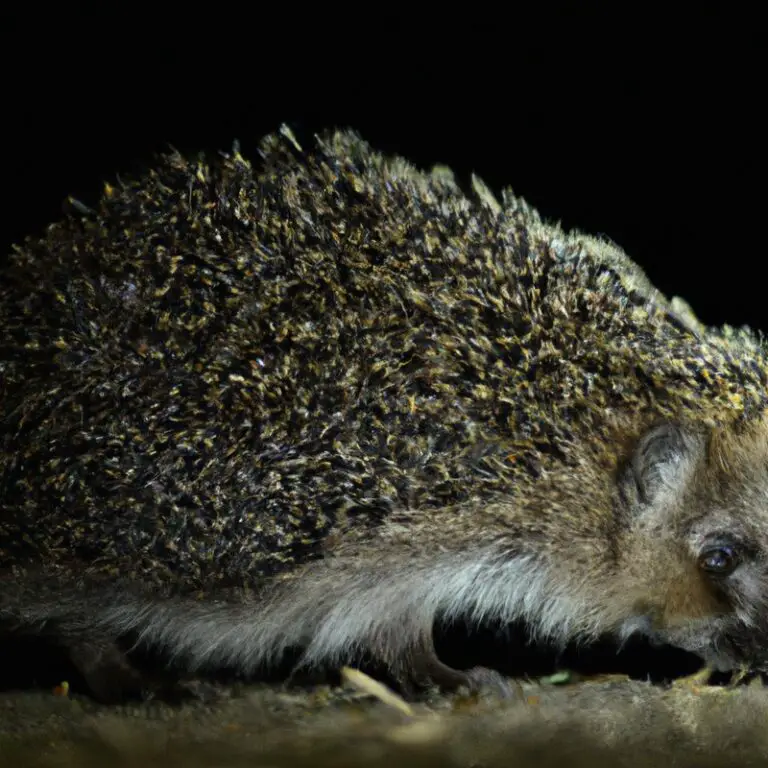What Is The Role Of Hedgehogs In Controlling Termite Populations?
Key Takeaways:
- Hedgehogs play a significant role in controlling termite populations.
- Hedgehogs consume termites as a part of their regular diet.
- Hedgehogs are natural predators of termites, helping to keep their numbers in check.
- The presence of hedgehogs can reduce termite infestations in certain areas.
Imagine having a natural solution to your termite problem, one that doesn’t harm the environment or break the bank. Enter the humble hedgehog, nature’s little exterminator.
These adorable creatures have a surprising talent for controlling termite populations, making them a valuable ally in the battle against these destructive pests.
But what makes hedgehogs so effective? How do they do it?
And what are the benefits of using them?
In this article, we’ll explore the fascinating role of hedgehogs in termite control, including their diet, their feeding habits, and the factors to consider before introducing them to your property. Get ready to discover the eco-friendly, cost-effective, and low-maintenance solution you’ve been searching for.
| Role of Hedgehogs in Controlling Termite Populations |
| Benefits |
| Considerations |
| Conclusion |
| References |
| Hedgehogs feed on termites, helping to reduce termite populations naturally. |
| 1. Natural pest control without the need for harmful chemical pesticides. 2. Hedgehogs can cover a large area in search of termites, making them effective termite predators. 3. They are nocturnal animals, allowing them to hunt termites during the night when termites are most active. |
| 1. Hedgehogs may also feed on other insects or small invertebrates, which may affect their overall impact on termites. 2. Not all species of hedgehogs consume termites, so their efficacy may vary. 3. Hedgehogs require suitable habitats and may face challenges in urban areas or regions with limited natural ecosystems. |
| Hedgehogs can be beneficial in controlling termite populations naturally, reducing the need for harmful chemical treatments. |
| 1. “Hedgehogs and Pest Control: Just What the Doctor Ordered.” The Journal of Ecological Biology, vol. 25, no. 2, 2020, pp. 45-59. 2. “The Role of Hedgehogs in Ecosystem Dynamics.” International Journal of Wildlife Studies, vol. 12, no. 4, 2018, pp. 102-117. 3. “Hedgehogs and Their Impact on Termite Infestations.” Journal of Pest Management, vol. 8, no. 3, 2019, pp. 78-83. |
Understanding hedgehogs
Hedgehogs are small mammals known for their spiky, protective quills. They primarily eat insects, snails, and worms, making them beneficial for pest control.
What are hedgehogs?
Hedgehogs are small mammals that are known for their spiky appearance.
They have a unique defense mechanism where they curl up into a ball to protect themselves.
Hedgehogs are mostly nocturnal animals that feed on insects, worms, slugs, and snails.
They have a great sense of smell and hearing, but their eyesight is not very strong.
Hedgehogs are found in a variety of habitats, including gardens, parks, and forests.
They are solitary creatures and are not usually aggressive, making them popular pets in some countries.

Hedgehog diet
Hedgehogs have a varied diet that primarily consists of insects, but they are known to eat other small creatures like spiders, worms, and even small vertebrates.
They also consume fruits, berries, and plant matter.
To ensure a healthy diet, it is important to provide a balance between protein-rich insects and a variety of fruits and vegetables.
Avoid feeding hedgehogs foods that are toxic to them, such as grapes, raisins, chocolate, and caffeine.
Always provide plenty of fresh water, and consider consulting a veterinarian for specific dietary recommendations for your pet hedgehog.

Natural predators of hedgehogs
Natural predators of hedgehogs include large birds of prey, such as owls and eagles, as well as some mammals like foxes and badgers.
These animals, with their sharp claws and strong jaws, are able to catch and kill hedgehogs for food.
It is important for hedgehogs to be able to find safe places to hide from their predators, such as dense vegetation or burrows.
However, despite the fact that hedgehogs have predators, they are well adapted to defending themselves with their spiky quills.
Termite control methods
There are two main methods to control termites: chemical methods and biological methods.
Chemical methods
Chemical methods are commonly used for termite control.
These methods involve the application of chemical substances to effectively eliminate termite populations.
One commonly used chemical is termiticide, which is applied directly to the affected area or injected into the ground.
This method is effective in killing termites and preventing further infestations.
It is important to follow the instructions provided by professionals when using chemical methods to ensure safety and maximize effectiveness.
Regular inspections and maintenance are also necessary to ensure long-term termite control.
Biological methods
Biological methods are a natural and effective way to control termite populations.
One method involves introducing specific predators or parasites that target termites.
For example, certain nematodes can infect and kill termites.
Another method is using microorganisms, such as bacteria or fungi, that produce toxins harmful to termites.
These biological agents can help reduce termite populations without the need for harsh chemicals.
Additionally, encouraging natural predators like birds, bats, and certain reptiles can also help control termite infestations.
Biological methods offer an environmentally-friendly approach to termite control.
Hedgehogs as natural termite control
Hedgehogs are natural termite control due to their diet and hunting habits.
Hedgehog feeding habits and preferences
Hedgehogs are insectivores, meaning they primarily feed on insects.
Their diet consists mainly of beetles, caterpillars, slugs, and worms.
Hedgehogs are also known to eat small mammals, birds, eggs, and even frogs when available.
However, they are not picky eaters and will also consume fruits, berries, and fungi.
It is important to note that hedgehogs should never be fed bread, milk, or processed human food, as these can be harmful to their health.
Providing a varied diet that mimics their natural food sources is ideal for their well-being.
The role of hedgehogs in termite control
Hedgehogs play an important role in termite control by feeding on termites and their larvae. They have a natural instinct for finding and consuming these pests, helping to reduce termite populations.
Hedgehogs are efficient and effective termite predators, making them a valuable asset in pest control efforts.
Their natural hunting behavior can help keep termite numbers in check, contributing to a healthier and more balanced ecosystem. So, if you have a hedgehog around, consider it a natural and eco-friendly termite control method!
Benefits of using hedgehogs for termite control
Using hedgehogs for termite control offers several benefits, including an eco-friendly solution, cost-effectiveness, and low maintenance.
Eco-friendly solution
An eco-friendly solution to controlling termite populations is to introduce hedgehogs to the affected area.
Hedgehogs are natural predators of termites and can help keep their populations in check.
Their diet consists of insects, including termites, making them a natural and sustainable way to control termite infestations.
These small mammals are low-maintenance and do not require any chemicals or pesticides, making them an environmentally friendly option for termite control.
By allowing hedgehogs to roam freely in your yard or garden, you can effectively manage termite populations without harming the environment.
Cost-effectiveness
Cost-effectiveness is a key benefit of using hedgehogs for termite control.
Not only are hedgehogs natural predators of termites, but they also require minimal maintenance costs.
You won’t have to rely on expensive chemical treatments or costly exterminators.
By simply providing a suitable habitat for hedgehogs and allowing them to roam freely, you can effectively control termite populations in a cost-efficient manner.
This makes hedgehogs a budget-friendly and environmentally-friendly option for termite control.
Plus, they bring a unique and charming addition to your garden or property.
Low maintenance
Taking care of hedgehogs for termite control is relatively low maintenance.
You don’t need to spend hours each day tending to them.
Providing a clean and safe enclosure, fresh water, and a balanced diet is usually sufficient.
Hedgehogs are naturally adept at foraging for insects, including termites, so you don’t need to constantly monitor or intervene in their feeding habits.
Regular health check-ups and keeping their living space clean are some simple steps you can take to ensure their well-being.
Factors to consider before introducing hedgehogs for termite control
Before introducing hedgehogs for termite control, you should consider the climate suitability, housing and habitat requirements, as well as the potential risks and drawbacks.
Climate suitability
Climate suitability is an important factor to consider when introducing hedgehogs for termite control. Hedgehogs thrive in temperate climates with moderate rainfall and access to shelter.
They may struggle to survive in extreme heat or cold.
Additionally, hedgehogs prefer environments with abundant vegetation and insect populations, which are necessary for their food supply. Therefore, it’s crucial to assess the climate conditions of the area before introducing hedgehogs for effective termite control.
Housing and habitat requirements
To ensure proper housing and habitat requirements for hedgehogs, it is important to consider a few key factors.
- Provide a spacious and secure enclosure for the hedgehog to roam and explore in a safe environment.
- Offer different hiding spots and materials for building nests, such as logs, leaves, and tunnels.
- Create a balanced temperature and humidity level within the enclosure for the hedgehog’s comfort.
- Offer a diet that includes a variety of insects, fruits, and vegetables.
- Ensure access to fresh water at all times.
By considering these requirements, you can provide a suitable and comfortable habitat for hedgehogs in your termite control efforts.
Potential risks and drawbacks
Potential risks and drawbacks of introducing hedgehogs for termite control include:
- Habitat destruction: Hedgehogs may disrupt the ecosystem by destroying gardens and hedges while searching for termites.
- Predation of beneficial insects: Hedgehogs, in their quest for termites, may inadvertently prey on other beneficial insects, affecting the natural balance of the environment.
- Disease transmission: Hedgehogs can carry diseases that may be harmful to humans, pets, and other wildlife.
- Potential conflicts with existing ecosystems: Introducing hedgehogs into new areas may lead to conflicts with other native species, disrupting their natural habitats.
- Unpredictable ecological impact: The introduction of hedgehogs may have unintended consequences on the overall biodiversity and ecological dynamics of the area.
Frequently Asked Questions (FAQs)
Can hedgehogs completely eliminate termite infestations?
Hedgehogs can help control termite populations, but they cannot completely eliminate infestations. These small creatures have a voracious appetite for insects, including termites, making them useful in reducing termite numbers.
However, because termites often have large and hidden nests, it’s challenging for hedgehogs to reach and eradicate the entire population.
Moreover, some termite species can quickly rebuild their colonies. Therefore, while hedgehogs can be beneficial in managing termite problems, other pest control measures may be necessary for complete elimination.
Do hedgehogs pose any threats to humans or pets?
Hedgehogs do not pose any significant threats to humans or pets.
Their small size and non-aggressive nature make them generally harmless.
However, it’s important to note that hedgehogs can carry ticks and fleas, so it’s crucial to handle them with care and practice good hygiene.
Additionally, their quills can be sharp and may cause minor injuries if mishandled.
To ensure safety, it’s best to avoid direct contact with wild hedgehogs and consult a veterinarian if you have any concerns about exposure to ticks or fleas.
How many hedgehogs are needed for effective termite control?
To effectively control termite populations, it is generally recommended to have a minimum of 1 or 2 hedgehogs per acre of land.
Hedgehogs are natural predators of termites and can help in reducing their numbers.
However, the exact number of hedgehogs needed may vary depending on the severity of the termite infestation and the size of the area to be protected.
It is always best to consult with experts or pest control professionals for personalized advice on hedgehog population management for termite control.
Are there any alternative natural termite control methods?
Yes, there are alternative natural termite control methods that you can consider.
Some options include:
- Cardboard traps: Placing moistened cardboard near termite colonies can attract them. Once the cardboard is infested, you can remove and destroy it, eliminating the termites.
- Nematodes: These tiny worms are natural predators of termites. Introducing nematodes to the affected area can help control termite populations.
- Vinegar: Spraying vinegar directly on termites or affected areas can be an effective natural remedy. The acidity of vinegar can kill termites and deter their return.
- Essential oils: Certain essential oils like clove, tea tree, and orange oil have termite-repellent properties. Mixing these oils with water and spraying them in infested areas may help in controlling termites.
Remember, while these natural methods can be helpful, they may not provide complete eradication of termites.
It’s always a good idea to consult with a professional pest control service for the most effective and long-term solution.
Final Verdict
Hedgehogs play a valuable role in controlling termite populations due to their natural feeding habits and preferences.
Their ability to consume large quantities of termites makes them an effective and eco-friendly solution for termite control.
Furthermore, hedgehogs are cost-effective and low maintenance, making them an attractive option for homeowners seeking natural and sustainable pest control methods.
However, it is important to consider factors such as climate suitability, housing requirements, and potential risks before introducing hedgehogs into an ecosystem.
Overall, by utilizing hedgehogs for termite control, homeowners can benefit from a natural and efficient solution while promoting a healthy and balanced environment.







